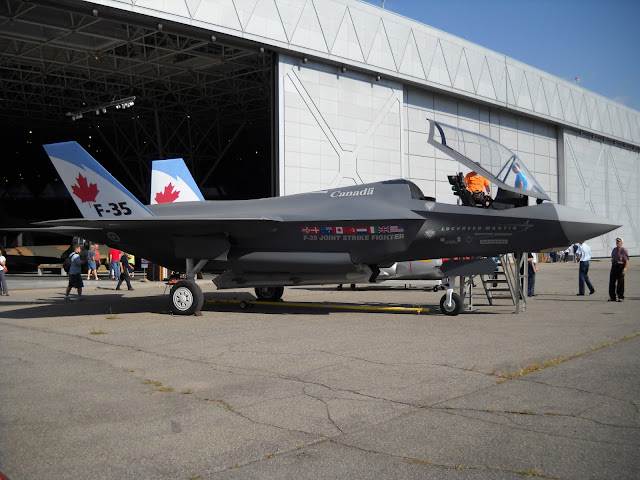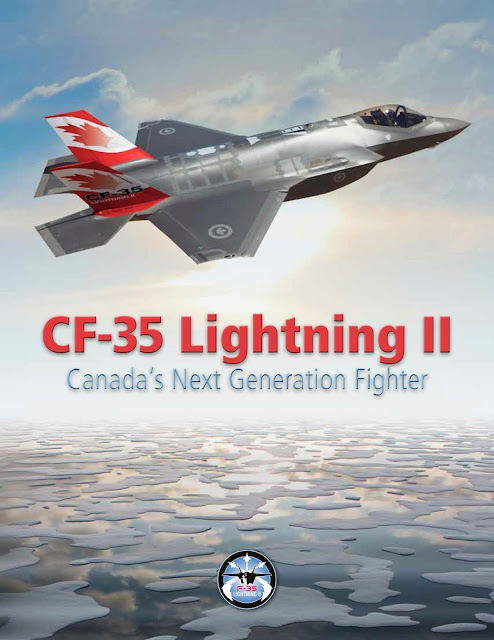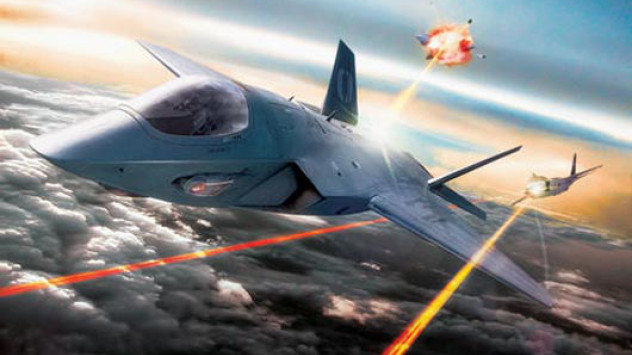WHY CANADA SHOULD BUY THE...
F-35 LIGHTNING II
I have spilled a lot of digital ink on why Canada should not purchase the Lockheed Martin F-35 Lightning II. Contrary to my rhetoric, the world as we know it will not end if Canada does announce an F-35 buy. In fact, there are plenty of reason why Canada should commit to the JSF. This may seem a little "off brand" today I am here to tell you why we should purchase the F-35.
It is the future.
Despite all the naysayers, the Joint Strike Fighter program has delivered on its promise to produce a 5th-generation in massive numbers. Over 700 airframes have been delivered with production now maxed out at 156 units per year. One can debate over whether or not the F-35 will match the sheer numbers fighters like the F-16, but there is little doubt that the JSF will be the NATO fighter for much of the 21st century.
Unlike the F-22 Raptor, which was deemed "too good" to export, the F-35 has been aggressively marketed to international sales. Indeed, part of the JSF's raison d'être is its emphasis on international cooperation. "Partner Nations" were courted early into the program and new buyers are being continuously sought out.
With the sheer ubiquitousness of the JSF, Canada need not worry about lack of support or having to deal with an "orphan" airframe. Canada has learned the hard way that unique, Canada-specific airframes can lead to a great deal of headaches.
An F-35 selection would give Canada peace of mind knowing that its fighters are under no risk of becoming hopelessly obsolete in 10-20 years. The JSF will undoubtedly still be going strong well into the 2050s and beyond.
Canada has already committed.
Canada has been part of the F-35 program longer than the F-35 itself.
Hear me out.
Back in 1997, the Canadian Government (under Jean Chretien) invested $10 million towards what would become the Joint Strike Fighter program. This was well before the "Battle of the X-Planes" that led to the selection of the Lockheed Martin X-35.
Since then, Canada has continued investing into the JSF program as a "Level 3 Industrial Partner". This gives Canadian aerospace contractors the ability to bid on F-35 related contracts. Not only that, but it guarantees us a better price under terms of the agreement.
If Canada decides against the F-35, all those millions of dollars would be effectively for nothing. Mind you, its hard to justify spending BILLIONS on the basis of a few million.
There has never been a better time.
Back in 2011, the F-35 program was not looking good. Years of cost overruns and setback gave good reason for trust issues. One could easily be excused for predicting that the F-35 simply could not deliver.
Now, ten years later, things have changed.
The JSF is now in full-rate production. Unit cost has come down considerably; all the way down to about $80 million. That makes it an absolute bargain when compared to fighter jets like the Eurofighter Typhoon and Dassault Rafale. Depending on the math, its price may even undercut the Saab Gripen E. Not bad for a cutting edge stealth fighter.
It is also important to note that the F-35 has managed to outgrow many of its early teething problems. These are no longer the trouble-prone early production models. Some trouble-shooting remains, but much of what remains are considered "minor issues".
Better still, the F-35s being built now will be compatible with the upcoming "Block 4" upgrades. These (mostly classified) upgrades will allow for more munitions, and make the JSF an all-around better fighter.
It's already good... But it could get even BETTER.
The nice thing about being THE NATO FIGHTER well into the foreseeable future is that the F-35 will undoubtedly see some upgrades over the years. Expect the JSF to see all the latest missile technology and maybe even frikkin' lasers.
Newer F-35s could even be built (or upgraded with) and entirely new type of engine. This new type of jet engine, labeled as adaptive cycle, can switch between high efficiency and high thrust modes. Much like variable valve timing in a passenger car, this does away with the the need to find the right compromise between power and fuel economy. One simply has maximum power when it is needed and reduced fuel consumption while cruising. In the case of the F-35, this could lead to a 30% improvement in range as well as a 10-20% increase in maximum thrust.
The caveat:
Given all these reasons, one can certainly understand why the F-35 should be Canada's replacement for the CF-18 Hornet. The JSF represents the future of air combat, after all.
Therein lays the biggest argument against it.
Almost every argument in favor of the F-35 proclaims how good it will be. In the last ten years, the F-35 has certainly improved, but it still has yet to be the fighter it was supposed to be from the very beginning. The fighter that was promised always seems to be just on the horizon. Greatness always seems to be coming "in the next software update". The potential is there, but there fighter still remains underwhelming in the here-and-now.
Unit costs may be down, but sustainability costs are still untenable. Reliability still leaves something to be desired. While many issues have been fixed, many still remain with no solution in sight. Any air-to-air missile besides the Sidewinder or AMRAAM is "in development" or "on the way". Given the F-35's track record, many of its promised improvements could take decades to finally see service... If at all.
More worrisome than anything else is that F-35s biggest costumer, the USAF, is hedging its bets. Instead of replacing aging F-15Cs with F-35s, they have instead chosen the F-15EX Eagle II. They are also looking into simpler, lower cost fighter to fly alongside the F-35.
A simpler, lower cost fighter? Where have I heard that before?







Comments
Post a Comment